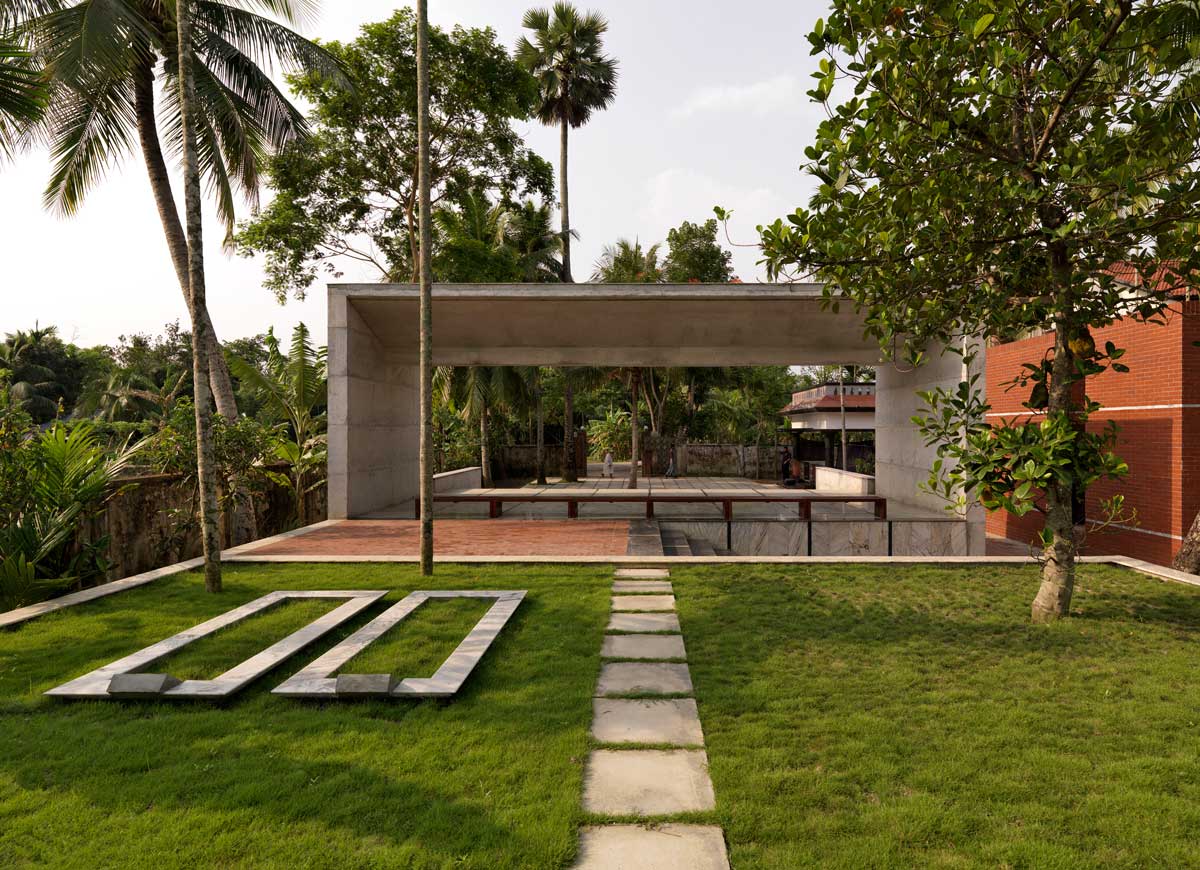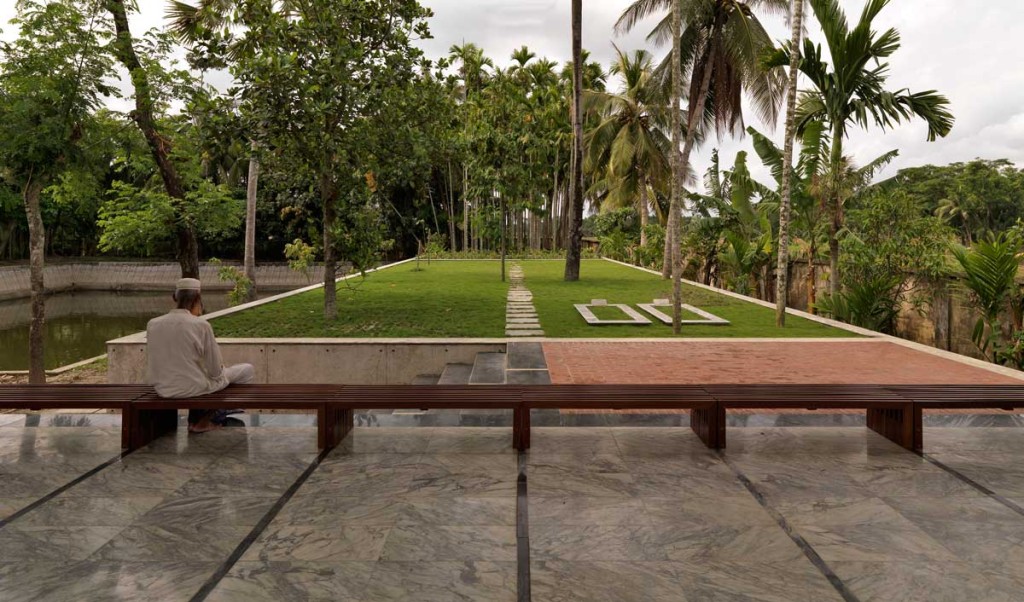SA Family Graveyard, Botkhil, Noakhali
“In appreciation of life”
The graveyard is a metaphor that contains death and appreciates the earthly life. In the process of temporal hustle and bustle, we often seem to overlook the fact that this planet is only a threshold space between the ‘foreplay’ and the ‘aftermath’ of life. This triggered the design to create a transcending space connecting the temporal to the celestial being through a frame made of concrete.
In this graveyard, silence is ushered with the breeze flowing in from the adjacent paddy fields along with a lone bench and together they create a place of contemplation.
The village in Botkhil in the southern Bangladesh is surrounded by farmsteads with crops changing colours from bright green during monsoon to profound fire gold in autumn. This is the country home of Mr. Salauddin Ahmed, where his parents spent their lifetime. He wished for their final resting ground to speak of his love, affection and respect for his parents, and for all the other family members to be placed here in due course in the years to come.
Rafiq Azam – SHATOTTO, Dhaka, Bangladesh
SHATOTTO is one of the reputed architectural firms in Bangladesh. It started its journey in 1995. It vows its voyage with the intent to unearth the lost history and heritage of Bengal and recreate the missing link of its urban and rural culture. Such expedition supplements its endeavor to institute a connection of local culture and its significance with the world culture of architecture. Shatotto is also trying to bridge the missing gaps between the architectural values and the current crisis of a responsible architecture to generate conversation between people, community and nature for a healthy society.












